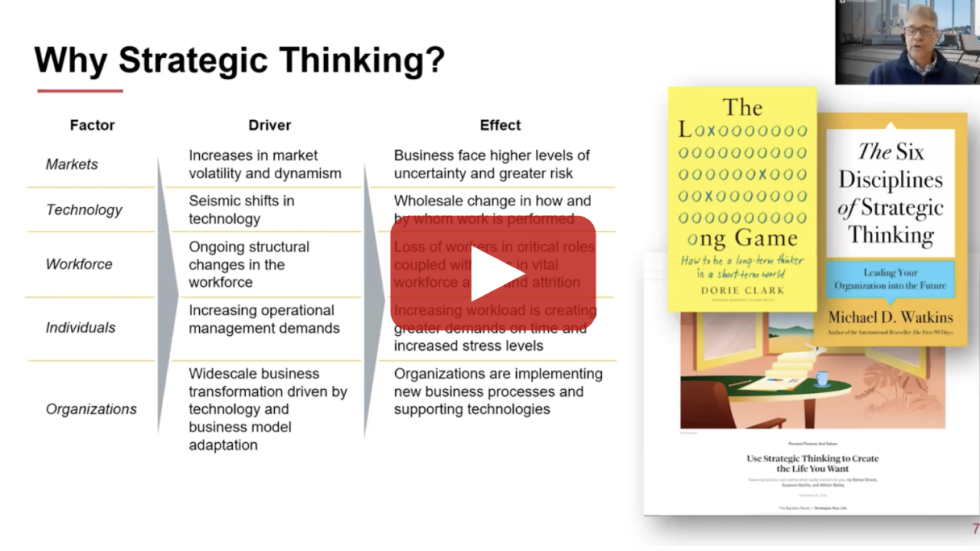
Senior leaders often wish their managers were more strategic, but it’s hard to think big thoughts when you have operational alligators snapping at your feet every day. Assuming you can shake them loose, the key question becomes, “How do I get started?”
Leadership is a craft and in order to get better at it, you have to practice it. Strategic thinking is about analyzing the problems, opportunities and challenges that you have, and putting together a broader perspective. You have to consider both what's happening today as well as what may happen in the future, and then think holistically about how you fit those two things together.
While doing this, there are four main steps that you can follow to begin walking down the path of strategic thinking.
1. Gather
This first step can be overwhelming, as there's only so much information we can absorb and assimilate at once. It can be helpful to start by asking yourself a simple set of questions, which can be divided into the micro and the macro levels.
The micro:
- Is what I’m working on today our highest priority?
- How does this align to what we’re doing as an organization, or where our organization is headed in the future?
- What does success look like?
Next, it is important to consider the conditions that impact us in our broader environment.
The macro:
- What are the trends that are having the greatest impact on your organization today and, more importantly, into the future?
- What are the things that I should be doing as a team leader to prepare for that?
Once you know what questions you want to answer, you can begin collecting and reviewing strategic information pertinent to your business:
- Analyst reports — what the experts are thinking
- Shareholder reports — what your leaders are saying
- Articles written about your organization and its competitors — what the observers are seeing
Data like annual reports, employee surveys and customer information are all great sources that most managers have access to, so start there. Gathering information is an ongoing process; you don't just do it once. As a leader, you have to be committed to ongoing learning. The best leaders are learners.
2. Analyze
Next, review the information in depth, and start thinking about how to organize it in a way you can understand. It’s not enough to just explore collected information. You need to restructure it to identify trends, patterns, exceptions, major shifts and any other insight that might stimulate thinking about the future.
Make notes, create summaries and use a mind map or similar tools to structure your thoughts. This is a great way to organize concepts and put them in a hierarchy from a primary topic to secondary, tertiary and so on.
3. Project
Then, shift from analysis to creativity. Send your mind into the future by imagining what a future or futures could potentially look like. Envision a world where technology plays an even greater role than it does now, where work is vastly different, where existing energy sources yield to new ones, where no language or travel barriers exist and collaboration is truly global.
Strategic thinking is a future-focused activity. Picture different scenarios and how they might affect your organization. Shell is a company renowned for their multi-decade scenarios — watch how they do it here.
4. Strategize
Finally, consider what actions you would take right now if you were a senior leader preparing for the future you see. Identify what would need to change today to be ready. Think about your products, services, workforce, investments, policies, competitors, stakeholders — any facet of organization life that would need to adapt to prepare for the eventualities of a new frontier.
Does this sound like something you can’t fit into your daily schedule? Good, don’t try. Set aside a time and place for this kind of reflection. Make it a habit and you will benefit from it. I encourage you to just start the process. Imagine the value when a group of managers or an executive team does it regularly.
